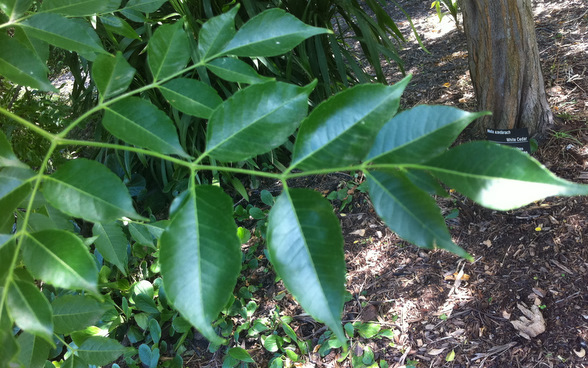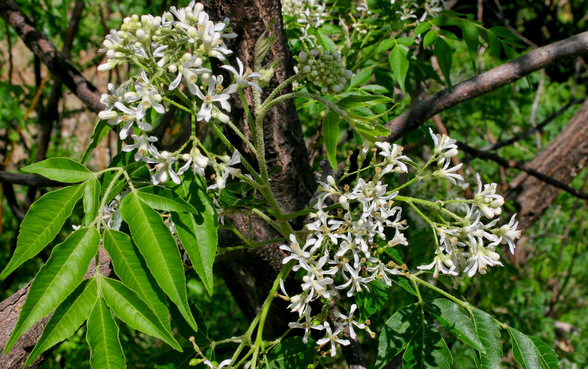Fruits/Seeds
Round, yellow berries, 1 – 2 cm in diameter, grow in clusters.
Field Guide
Improve your identification skills. Download your White Cedar field guide here!
Also known as Cape Lilac. It reaches maturity when it is 6 – 10 years old and lives for about 20 years.
Deciduous tree, usually 10 – 15 m high but can reach 45 m in its natural environment. Its canopy is 6 – 8 m wide.
Bright glossy green and oval in shape, 2 – 7 cm long and 1 – 3 cm wide. They are arranged either side of a 12 – 45 cm long stem and turn yellow in late autumn before falling from the tree in winter.
Pale purple to white, star-shaped, forming clusters that are 10 – 20 cm long. Each individual flower is about 2 cm in diameter and consists of 5 petals. The flowers have a chocolate scent!
Round, yellow berries, 1 – 2 cm in diameter, grow in clusters.
Improve your identification skills. Download your White Cedar field guide here!

First fully open single flower
Full flowering (record all days)
End of flowering (when 95% of the flowers have faded)
First fully open leaf
Leaves open (record all days)
First leaf to change colour
Leaves changing colour (record all days)
First leaf to drop this year
50% or more of leaves dropped (record all days)
No leaves (record all days)
Fruit fully ripened/berry reached full size (record all days)


The White Cedar is one of only a few native Australian plants that are seasonally deciduous in winter, although many species drop their leaves during droughts, particularly those in the north.